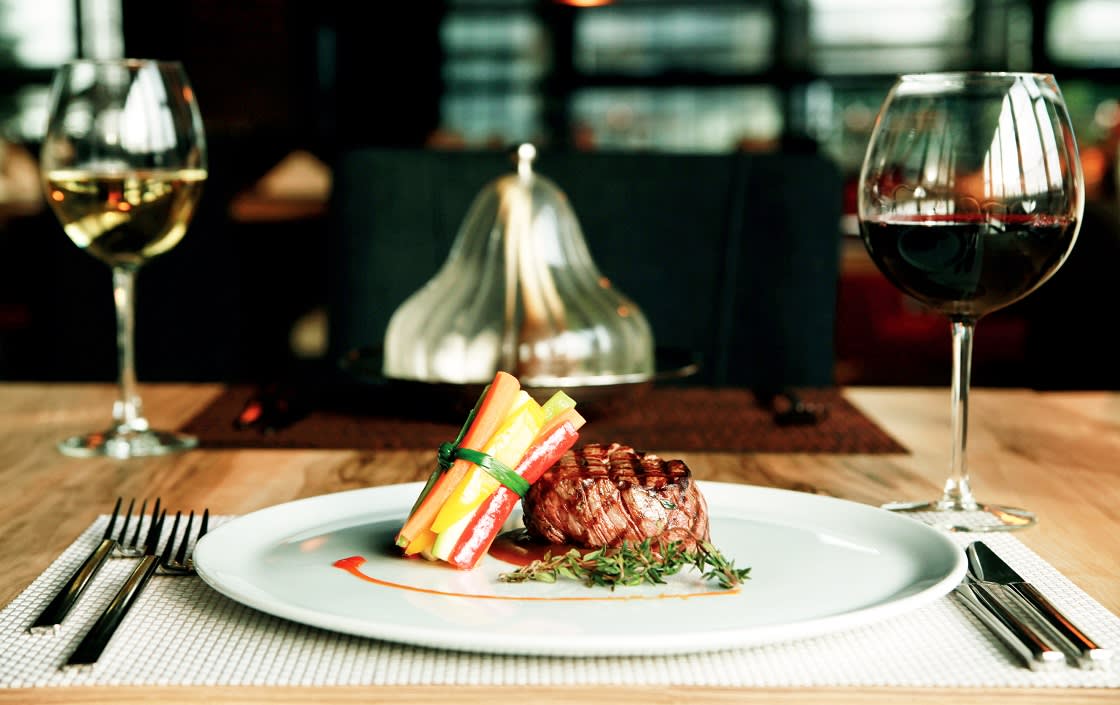
As one of the five countries in the world with more cattle than people, it’s perhaps no surprise that Argentina is famed for its steak which is prevalent everywhere, but you may not know that Argentina is a vast and diverse country with an equally varied cuisine with a strong Spanish and Italian influence.
Historically Argentina has been renowned for eating more red meat than any other country in the world, and there’s no doubt that steak features heavily in many of the country’s most traditional dishes, but Argentinian cuisine isn’t all about beef. Here are 15 of the most famous Argentinian foods you should try:
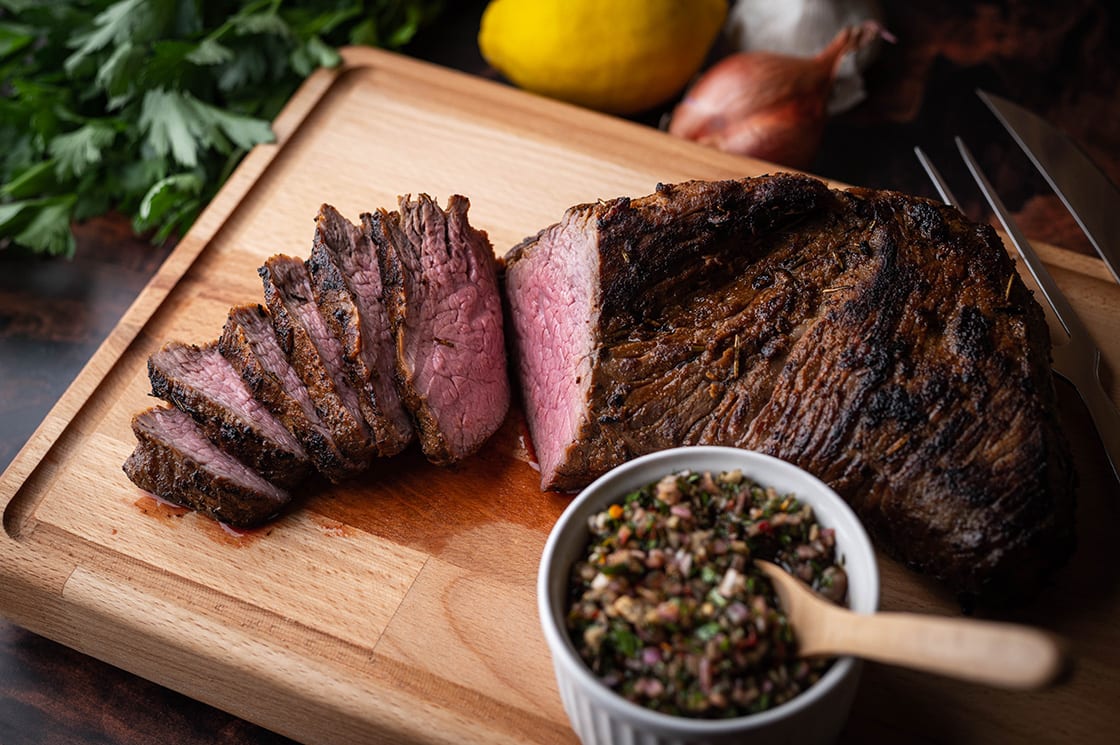
Grilled Tri-Tip Steak With Chimichurri Sauce
Don’t leave Argentina without spending a leisurely afternoon beside the warmth of a grill or open fire, feasting on copious grilled meats. Asado is both a gathering around a barbecue with friends and a method of grilling; a multi-step affair that often lasts several hours. Expect to find beef, pork, ribs, sausages, blood sausages, and sweetbreads hot off the fire. This is Argentina’s traditional food. In Patagonia, look out for a whole lamb or pig roasting over an open flame.
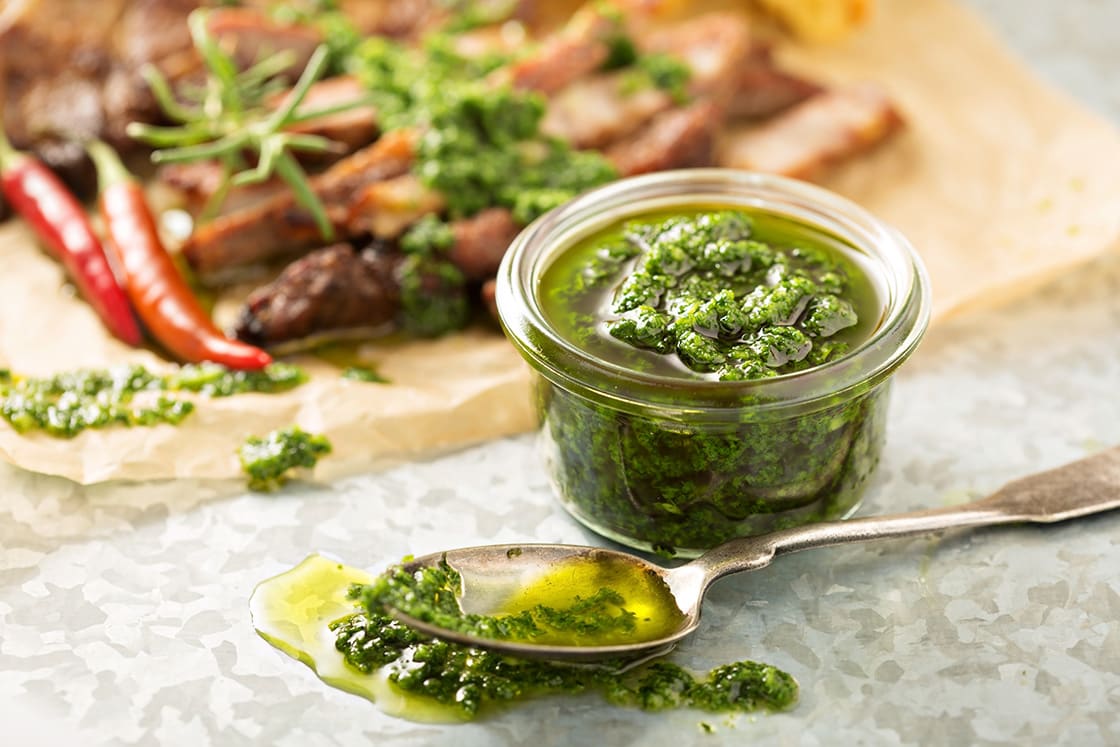
Chimichurri is a loose oil-based condiment used to accompany barbecued meats or churrasco
Chimichurri is an herbaceous green salsa made of finely chopped parsley, oregano, onion, garlic, chili pepper flakes, olive oil, and a touch of lemon or vinegar, which is classically paired with grilled meats, especially beef, or used as a marinade.

Argentine variant of provolone cheese
Grilled provoleta cheese is popular before a meal or as a side to barbecued meats. The semi-hard provolone is the perfect cheese for the grill because it’s compact and firm. For asado, it is sliced about an inch thick, seasoned with a generous amount of oregano, maybe a light sprinkling of dried red chili flakes, and grilled until it just starts to melt in the center. It is typically enjoyed topped with chimichurri sauce and served with crusty bread.
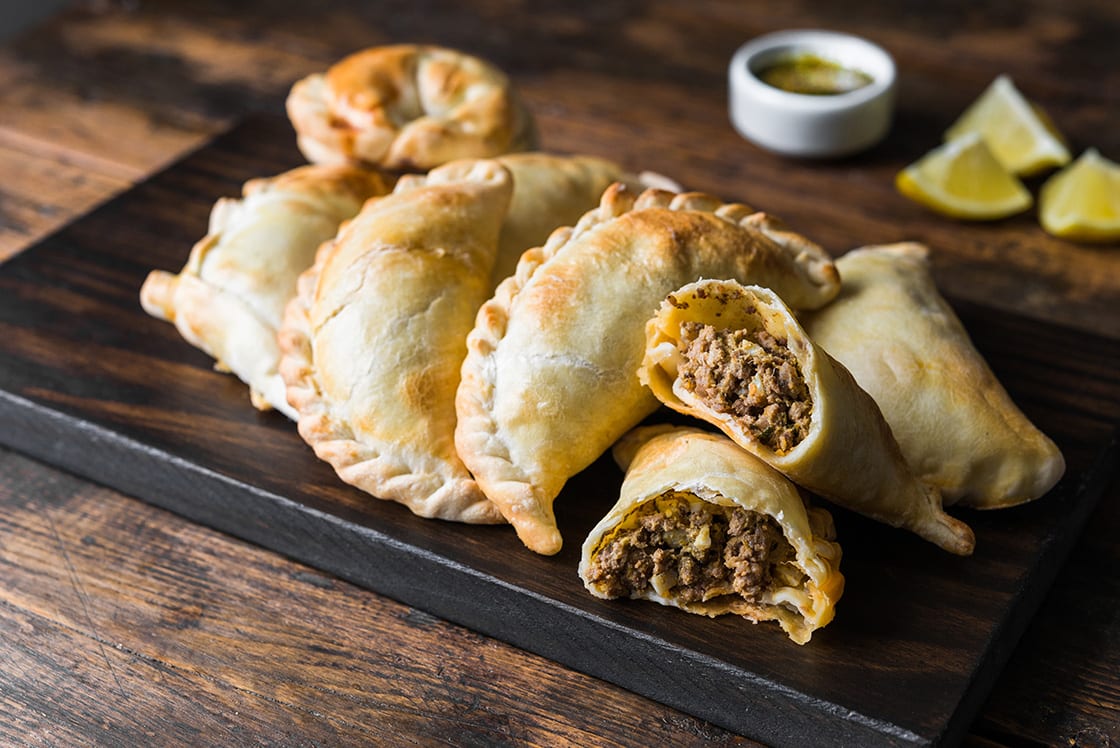
Traditional Baked Argentine Empanadas With Meat Beef Stuffing
Empanadas are stuffed dough pockets, deep-fried or baked, then filled with sweet or savory stuffing, depending on the province. Common savory fillings include chicken, goat, cheese, ham, blue cheese, and stewed and spiced ground beef. Sweet fillings might include quince jam, sweet potato paste, or dulce de leche, sprinkled with cinnamon, sugar, or sweet raisins. Markings on the pastry fold identify the delights hidden inside.
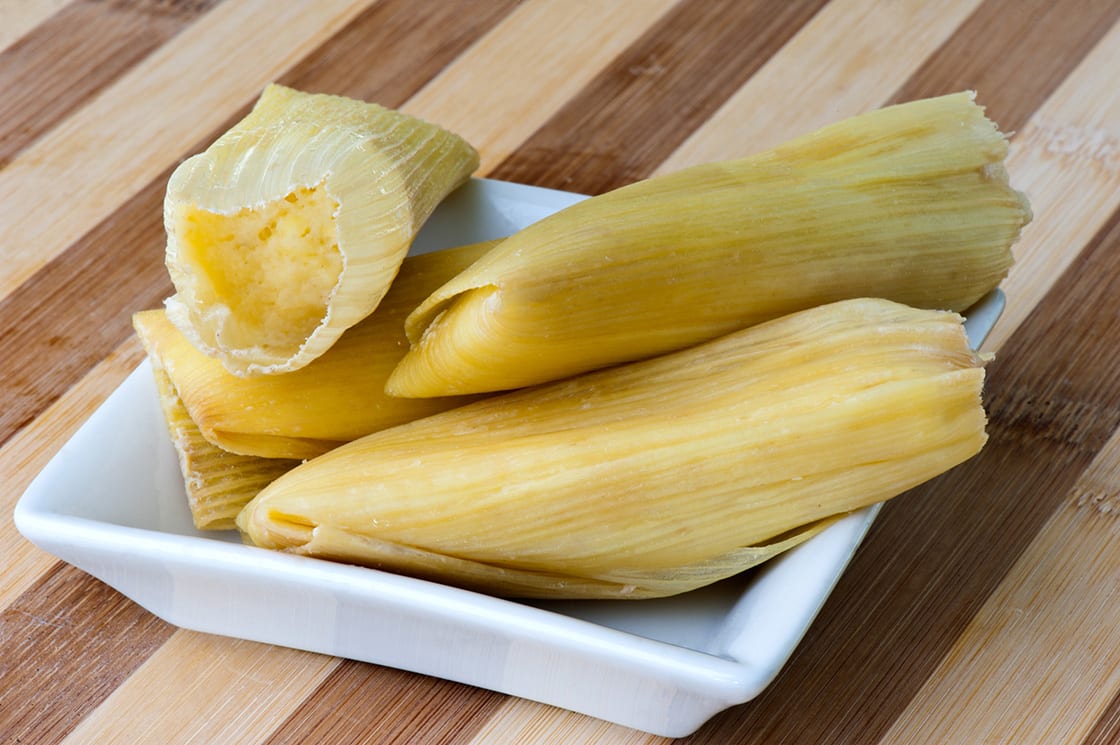
In Argentina, humitas are prepared with fresh corn
Humita is the ultimate celebration of corn. Made of creamed corn, onion, spices, and goat cheese, wrapped in corn husks (chala), and then steamed or boiled, humita serves both as a savory snack and a main dish.
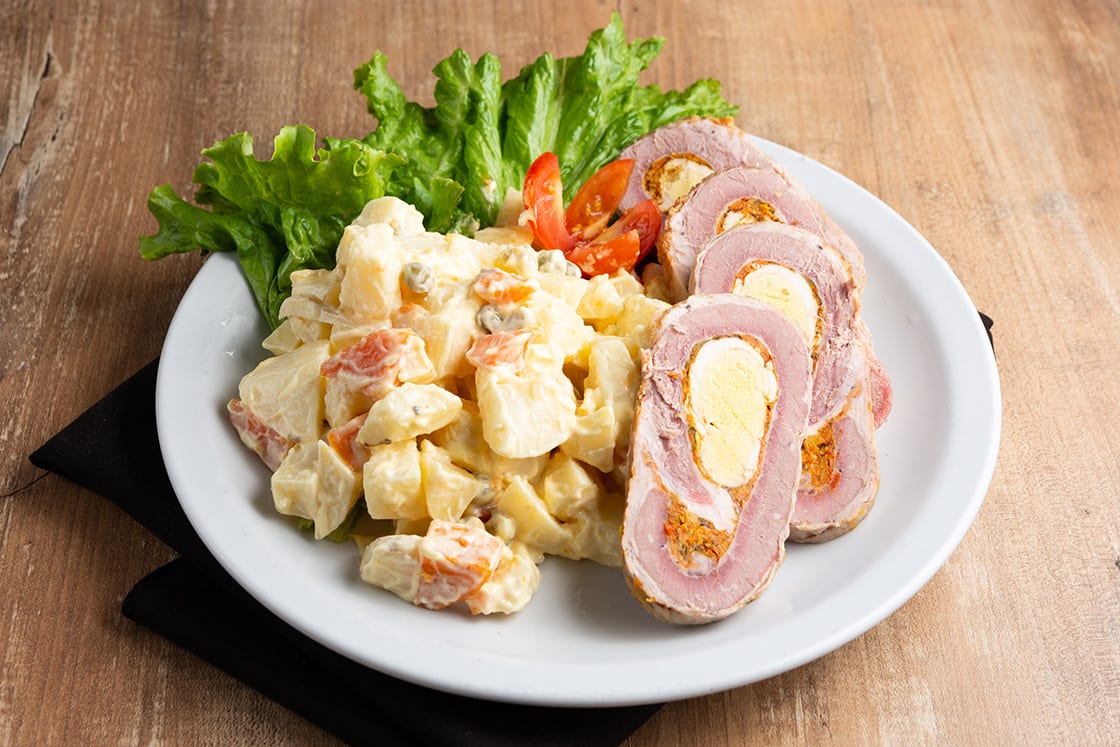
Beef Matambre With Potatoes Salad
Matambre Arrollado is a flavorful Argentinian flank steak stuffed with vegetables, hard-boiled eggs, herbs, and olives. The meat is rolled around the filling, then boiled, baked, or grilled. Matar means “to kill”, and “hambre” means “hunger”. Therefore, matambre is literally a “hunger killer” on the basis that it is the first item to be ready on the grill, keeping everyone’s hunger at bay while waiting for the rest of the asado to catch up.
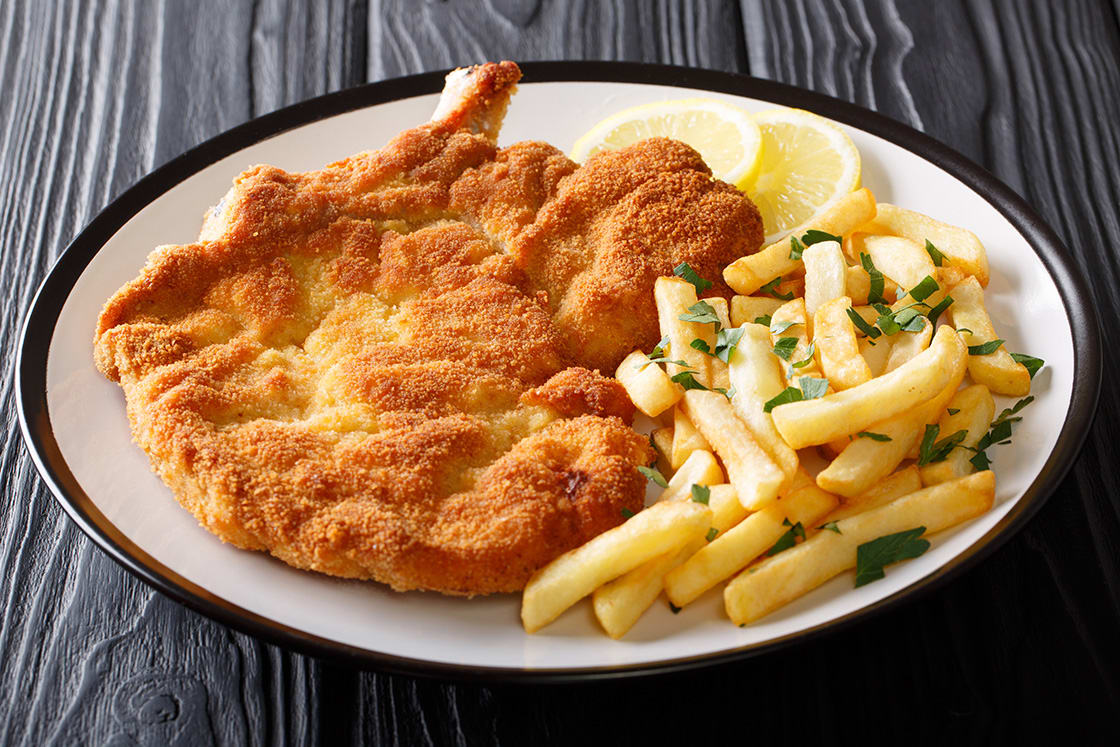
Fried Veal Cutlet Milanese With Lemon And French Fries
As the name suggests, Milanesa is an Italian-influenced creation – an Argentinian escalope or schnitzel − made from pounded beef or chicken, covered with breadcrumbs, and often served for lunch. The variety of toppings is what makes this dish special, ranging between fried eggs, cheese, ham, and tomato sauce, and served with fries or a salad.

On the 29th of each month ñoquis (gnocci) are eaten across Argentina
Widespread across Argentina, on the 29th day of each and every month, families and friends get together to eat gnocchi either, whether that be at home or in restaurants as it’s quite common to find ñoquis on menus on this day. Italian immigrants (whose descendants make up about 50 percent of Argentina’s population) likley brought this tradition with them, perhaps a feast day celebration of an Italian saint named San Pantaleon, one of the patron saints of Venice, who was canonized on the 29th. Traditionally, money is placed under the plate while you dine to attract prosperity.

Three Classic Choripanes With Chimichurri
Choripán is the ultimate in Argentine street food, sold at street stands throughout Latin America. It is a sandwich consisting of pork and beef chorizo sausage and a variety of condiments served in a crusty bun. It is usually consumed on the go. Depending on the province, caramelized onions, pickled eggplants, green peppers, and a host of other condiments are also added.

Carbonada En Zapallo, Argentine Beef Stew In Pumpkin
The carbonada is another famous Argentine food. This is a stew made from lots of vegetables, including potatoes and sweet potatoes, sweetcorn, carrots, peppers, as well as bacon or other meat, topped with fruits ranging from dried apricots and raisins to peaches, pears, and green grapes. It is hearty and appetizing and is usually served in a pumpkin that has been hollowed out and baked. This pumpkin not only serves as a bowl but diners can scrape the inside to enrich the stew.
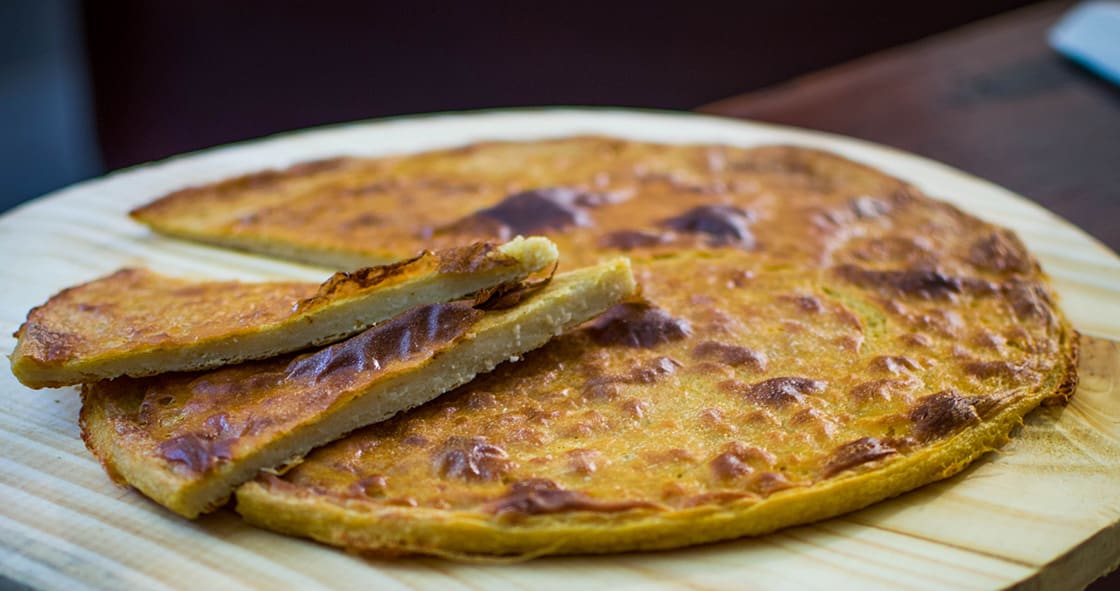
Faina, thin flatbread, and it’s made from chickpea flour
Argentinians love pizza, which they make with a thick crust, light sauce, and loads of cheese, dripping down the side of each slice. Toppings include green olives, oregano, and dried chili flakes. If you want to eat your pizza like a local, you should order a slice of fainâ to go with it. Fainâ is a crunchy, thin flatbread and it’s made from chickpea flour. Served in slices, it is placed atop the pizza to form a crunchy top layer, which serves to absorb the fat drippings from the extra cheese.

Cooked Golden Butter Half Moons On Black Table
Literally translated as half-moons, Medialunas are dense and gooey Argentinian croissants. They are either salty or slightly sweet and they’re usually served with coffee for breakfast or as a condiment.

Dulde De Leche, A Sweet Made From Milk
Dulche de leche, which loosely translated means “candy made from milk” or “milk jam”, this thick and sugary caramel-like sauce is made by slowly heating and reducing condensed milk until sweetened and sticky. It is found in cakes, truffles, and cookies, and used as a topping for ice cream, dessert empanadas, or crepes.
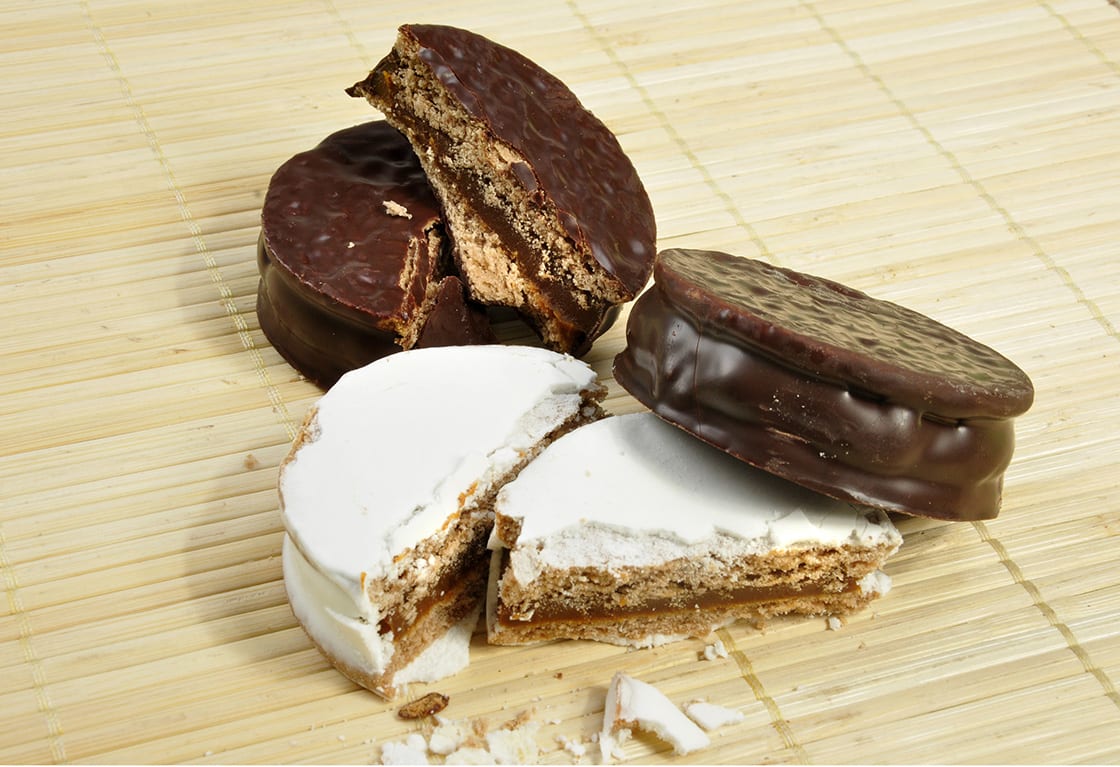
Alfajor Of Chocolate And Powdered With Sugar
Alfajores are crumbly shortbread-like sandwich cookies filled with jam, mousse, or dulce de leche. They are considered something of a national treasure in Argentina despite having originated in the Arab world, brought to southern Spain by the Moors, and later carried by the Spanish to Argentina.

Yerba Mate
Yerba mate is an herbal tea made from the leaves and twigs of the mate plant that’s popular in Argentina and other South American countries where the plant occurs natively. The leaves are dried, chopped, and ground into a powder, or steeped as whole leaves into hot water. You’ll find it filling hollowed-out squash gourds across the country. Fitted with a metal straw that doubles as a sieve, the gourd is often passed around a group, each person sipping before passing it on. Like coffee and other teas, yerba mate stimulates the nervous system and is most commonly consumed as an energy booster.
But what about the vegetarians among you? In years gone by you may have struggled for a decent meat-free option, but due to booming beef exports, inflation making steak prices less affordable, and shifting trends to a healthier more plant-based diet in recent years, vegetarian visitors to Argentina can thankfully now expect to see vegetarian options in many parts of Buenos Aires, even in some of the country’s world-famous steakhouses!
Can you almost hear the sizzle of the steak on the parrilla (grill) yet? Tender steak and tango await!
While Rainforest Cruises aim to provide accurate and up-to-date information, we make no representations as to the accuracy or completeness of any information herein or found by following any link on this site. Rainforest Cruises cannot and will not accept responsibility for any omissions or inaccuracies, or for any consequences arising therefrom, including any losses, injuries, or damages resulting from the display or use of this information.




